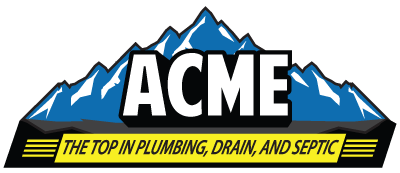Septic Tank Cleaning 101: A Step-by-Step Guide to Proper Maintenance
Septic tank cleaning is a crucial aspect of maintaining a healthy and efficient septic system. Regular cleaning helps prevent clogs, backups, and system failures, ensuring that your wastewater management system operates smoothly. In this blog post, we'll provide a step-by-step guide to proper septic tank cleaning, empowering homeowners with the knowledge and tools to maintain their septic systems effectively.
Step 1: Determine the Pumping Frequency
The first step in septic tank cleaning is to determine the recommended pumping frequency for your system. The pumping frequency depends on factors such as the size of your household, the capacity of your septic tank, and your water usage habits. As a general guideline, septic tanks should be pumped every 3-5 years to remove accumulated solids and maintain optimal performance.
Step 2: Locate Your Septic Tank
Before you can clean your septic tank, you'll need to locate its access point. The access point is typically a small cover or lid located above the tank, often found in the yard or basement of the home. Use caution when accessing the septic tank to avoid injury and damage to the tank and surrounding area.
Step 3: Prepare for Cleaning
Once you've located the access point, prepare for cleaning by gathering the necessary equipment and materials. You'll need a septic tank pump or vacuum truck, protective gear such as gloves and goggles, a hose or pipe for transferring waste, and a designated disposal site for the pumped waste.
Step 4: Pump the Septic Tank
Using the septic tank pump or vacuum truck, begin pumping the contents of the septic tank. Be sure to follow proper safety procedures and guidelines when operating the equipment. Pump the tank until it is empty, taking care to remove as much sludge and solid waste as possible.
Step 5: Inspect the Tank and Components
After pumping the septic tank, take the opportunity to inspect the tank and its components for any signs of damage or wear. Look for cracks, leaks, or corrosion in the tank walls, as well as any damage to the inlet and outlet pipes. Address any issues promptly to prevent them from escalating into more significant problems.
Step 6: Rinse and Clean
Once the tank has been pumped and inspected, rinse and clean the interior of the tank to remove any remaining debris or residue. Use a hose or pressure washer to thoroughly rinse the tank walls and components, ensuring that they are free from buildup and contaminants.
Step 7: Dispose of Waste Properly
Dispose of the pumped waste properly by transporting it to a designated disposal site or wastewater treatment facility. Avoid dumping waste in areas where it can contaminate groundwater or surface water sources, as this can have harmful environmental consequences.
Step 8: Schedule Routine Maintenance
Finally, schedule routine maintenance for your septic system to ensure ongoing performance and longevity. Follow a regular pumping schedule based on the size of your household and the capacity of your tank, and conduct periodic inspections to identify any potential issues early on.
In conclusion, proper septic tank cleaning is essential for maintaining the health and functionality of your septic system. By following these step-by-step guidelines and scheduling routine maintenance, you can ensure that your septic system operates smoothly and efficiently for years to come.
